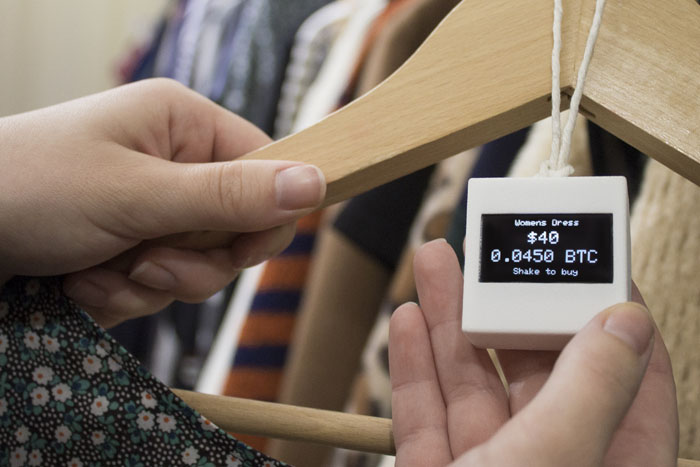Para operar con bitcoin o con cualquier otra criptomoneda necesitaremos apoyarnos en gráficos de cotización en tiempo real. Cualquier exchange dispone de gráficos de las altcoins que allí se comercian pero nosotros de momento solo vamos a centrarnos en bitcoin, por lo que haremos un repaso de una de las mejores páginas donde encontrar gráficos en los que apoyar el análisis previo a nuestra operativa.
No es otro que bitcoinwisdom. Esta fantástica web nos muestra gráficos de bitcoin referenciados a dolares, euros, yuanes, dolares canadienses y rublos.
Además nos proporciona enlaces a los más importantes exchanges donde se comercian, indicándonos ya en su página principal la cotización en tiempo real, la variación y el volumen comerciado en el día, o en los periodos 24 horas/ 7 días/ 30 días. lo mismo para litecoin.
Añade también algunas de las más importantes altcoins con los mismos parámetros y enlaces. Ni siquiera es necesario registrase en la página para disponer de toda la información y herramientas de análisis que podamos necesitar.
 |
| Mitad superior de la página principal con todos los datos, enlaces y opciones de Bitcoin y Litecoin. |
 |
| Parte de la mitad inferior con los mismos datos y enlaces a los exchanges de algunas de las altcoins más importantes. |
OPERANDO CON BITCOIN
Como vamos a operar con bitcoin obviaremos todos los demás datos disponibles y nos centraremos en la parte superior, concretamente en las cotizaciones bitcoin/dolar, bitcoin/yuan y bitcoin/euro.Aunque nosotros operaremos en futuros y utilizaremos el gráfico de futuros de okcoin, es importante que tengamos muy a mano los gráficos de los principales exchanges para poder ver la tendencia general y comparar cualquier movimiento en los diferentes mercados.
Hay que tener en cuenta que los mercados tienen diferentes horarios y eso hace que aunque las tendencias principales se acaben confirmando en todos, algunas se anticipen en el gráfico del mercado donde empieza el movimiento. Asi, nos fijaremos sobretodo en Bitfinex y Bitstamp para el mercado americano y europeo en dolares, en Kraken para el mercado en euros y en BTCChina, Huobi y Okcoin para el mercado chino en yuanes. Veremos como ejemplo un gráfico de Bitstamp en intervalo de tiempo 1 hora.
 |
| Gráfico de Bitstamp |
LA IMPORTANCIA DEL GRÁFICO ADECUADO
En este gráfico podemos, no solo seguir la cotización, sino cambiar los intervalos para observar mejor las tendencias generales o buscar señales ya sea para comercio intradía, o a corto, medio o largo plazo. Disponemos también de un sinfín de ajustes y herramientas para poder realizar un completo análisis técnico. Vemos también los cruces de operaciones en tiempo real y el volumen.Hay gráficos mucho más completos, como el de la web de Tradingview, posiblemente el mejor gráfico para análisis técnico que podamos encontrar, además de poder ser utilizado para cualquier divisa, commodity o mercado mundial. Es un gráfico excepcional con todas las herramientas y parámetros imaginables, el paraíso de cualquier analista.
Aquí un pantallazo de como se ve, solo hay que fijarse en la cantidad de herramientas técnicas de que disponemos así como las posibilidades de publicar, comentar o compartir nuestros resultados en uno cualquiera de los infinitos mercados a nuestra disposición.
 |
| Gráfico de Tradingview BTC/USD en Bitstamp rodeado de herramientas de AT. |
Otros están más especializados, como el de altcoingraphs, que está basado en algunos de los más importantes exchanges de altcoins, o el de hypron, que basado en el de Wisdom te muestra en pantalla hasta cuatro gráficos al mismo tiempo, o el de cryptowatch, basado también en el de wisdom pero con la particularidad de incluir los mercados de futuros.
Este gráfico va a ser el que tendremos en cuenta al operar en okcoin, concretamente el de futuros okcoin. Se ve así.
Este gráfico va a ser el que tendremos en cuenta al operar en okcoin, concretamente el de futuros okcoin. Se ve así.
 |
| Mercado de futuros semanal en okcoin en intervalo 15 minutos |
CONCLUSIÓN
En definitiva, hay muchas web de gráficos, desde las más enfocadas a un completo análisis técnico a las más especializadas en un mercado o con funciones que pueden ser muy útiles como varios mercados en pantalla o los más importantes exchanges de altcoins con parámetros como el volumen comerciado para cada moneda, el diferencial de subida o bajada en un intervalo de 24 horas, etc...Sin olvidar que cada exchange, asset o mercado tiene sus propios gráficos, por lo que para cada necesidad tendremos una solución.
Pero nosotros vamos a operar en bitcoin y concretamente en el mercado de futuros por lo que la única herramienta que de manera imprescindible deberemos tener siempre a mano es la página principal de bitcoinwisdom y el gráfico de futuros de cryptowatch/okcoin. En una próxima entrada hablaré de qué son los futuros y como operar con ellos.
¿Quieres seguir disfrutando del blog? Puedes leer esta entrada.
¿Quieres seguir disfrutando del blog? Puedes leer esta entrada.

